Shipping Infectious Substances and Biological Materials [pdf]
Shipping Infectious Substances and Biological Materials [pdf]
Shipping Infectious Substances and Biological Materials [pdf]
Create successful ePaper yourself
Turn your PDF publications into a flip-book with our unique Google optimized e-Paper software.
C. Classes of Dangerous Goods<br />
<br />
Dangerous goods are defined as those goods that meet the criteria of one or more of nine<br />
United Nations (UN) hazard classes. There are nine classes that relate to the type of<br />
hazard.<br />
Class 1<br />
Class 6<br />
Explosives<br />
Toxic <strong>and</strong> <strong>Infectious</strong> <strong>Substances</strong><br />
Class 2<br />
Class 7<br />
Gases<br />
Radioactive Material<br />
Class 3<br />
Class 8<br />
Flammable liquids<br />
Corrosives<br />
Class 4<br />
Class 9<br />
Flammable solids<br />
Miscellaneous Dangerous Goods<br />
Class 5<br />
Oxidizing <strong>Substances</strong> <strong>and</strong> Organic Peroxides<br />
<br />
The scope of this document is to provide guidance in transporting those Dangerous Goods<br />
that fall under Class 6 (specifically <strong>Infectious</strong> <strong>Substances</strong>, division 6.2) <strong>and</strong> Class 9<br />
(specifically dry ice <strong>and</strong> genetically modified organisms).<br />
Revised: April 2011 6


![Shipping Infectious Substances and Biological Materials [pdf]](https://img.yumpu.com/31737794/6/500x640/shipping-infectious-substances-and-biological-materials-pdf.jpg)
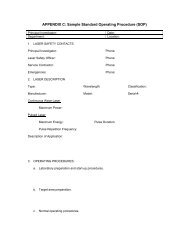
![List of Toxic Materials(U-list) [PDF]](https://img.yumpu.com/45290035/1/190x245/list-of-toxic-materialsu-list-pdf.jpg?quality=85)
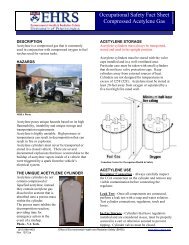
![CFATS Inventory Form: List of Chemicals of Interest (COI) [PDF]](https://img.yumpu.com/42514661/1/190x146/cfats-inventory-form-list-of-chemicals-of-interest-coi-pdf.jpg?quality=85)

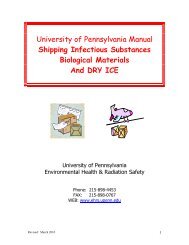


![Electrical Safety [pdf] - Environmental Health & Radiation Safety](https://img.yumpu.com/29768339/1/190x245/electrical-safety-pdf-environmental-health-radiation-safety.jpg?quality=85)
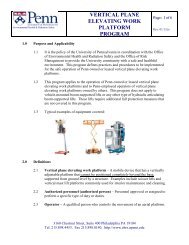
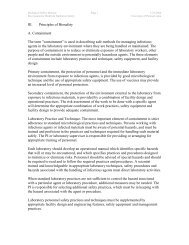
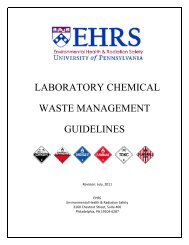
![Science Building Administrators Phone List [pdf]](https://img.yumpu.com/11571476/1/190x146/science-building-administrators-phone-list-pdf.jpg?quality=85)